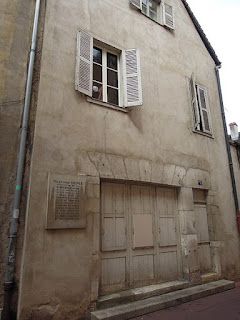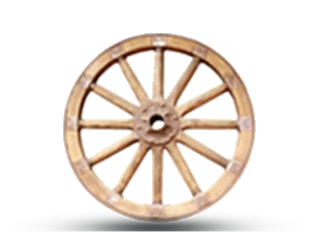History of Nicéphore Niépce
Joseph Nicéphore Niépce (French: [nisefɔʁ njɛps]; 7 March 1765 – 5 July 1833), commonly known or referred to simply as Nicéphore Niépce, was a French inventor, usually credited with the invention of photography. Niépce developed heliography, a technique he used to create the world's oldest surviving product of a photographic process: a print made from a photoengraved printing plate in 1825. In 1826 or 1827, he used a primitive camera to produce the oldest surviving photograph of a real-world scene. Among Niépce's other inventions was the Pyréolophore, one of the world's first internal combustion engines, which he conceived, created, and developed with his older brother Claude Niépce.
Niépce was born in Chalon-sur-Saône, Saône-et-Loire, where his father was a wealthy lawyer. His older brother Claude (1763–1828) was also his collaborator in research and invention, but died half-mad and destitute in England, having squandered the family wealth in pursuit of non-opportunities for the Pyréolophore. Niépce also had a sister and a younger brother, Bernard.
Nicéphore was baptized Joseph but adopted the name Nicéphore, in honour of Saint Nicephorus the ninth-century Patriarch of Constantinople, while studying at the Oratorian college in Angers. At the college he learned science and the experimental method, rapidly achieving success and graduating to work as a professor of the college.
Niépce served as a staff officer in the French army under Napoleon, spending a number of years in Italy and on the island of Sardinia, but ill health forced him to resign, whereupon he married Agnes Romero and became the Administrator of the district of Nice in post-revolutionary France. In 1795, he resigned as administrator of Nice to pursue scientific research with his brother Claude. One source reports his resignation to have been forced due to his unpopularity.
In 1801 the brothers returned to the family's estates in Chalon to continue their scientific research, and where they were united with their mother, their sister and their younger brother Bernard. Here they managed the family estate as independently wealthy gentlemen-farmers, raising beets and producing sugar.
In 1827 Niépce journeyed to England to visit his seriously ill elder brother Claude Niépce, who was now living in Kew, near London. Claude had descended into delirium and squandered much of the family fortune chasing inappropriate business opportunities for the Pyréolophore.Nicéphore Niépce died of a stroke on 5 July 1833, financially ruined such that his grave in the cemetery of Saint-Loup de Varennes was financed by the municipality. The cemetery is near the family house where he had experimented and had made the world's oldest surviving photographic image.
His son Isidore (1805–68) formed a partnership with Daguerre after his father's death and was granted a government pension in 1839 in return for disclosing the technical details of Nicéphore's heliogravure process.
A cousin, Claude Félix Abel Niépce de Saint-Victor (1805–1870), was a chemist and was the first to use albumen in photography. He also produced photographic engravings on steel. During 1857–1861, he discovered that uranium salts emit a form of radiation that is invisible to the human eye.
Follow unveilling hidden facts for more historical facts.....





Comments
Post a Comment